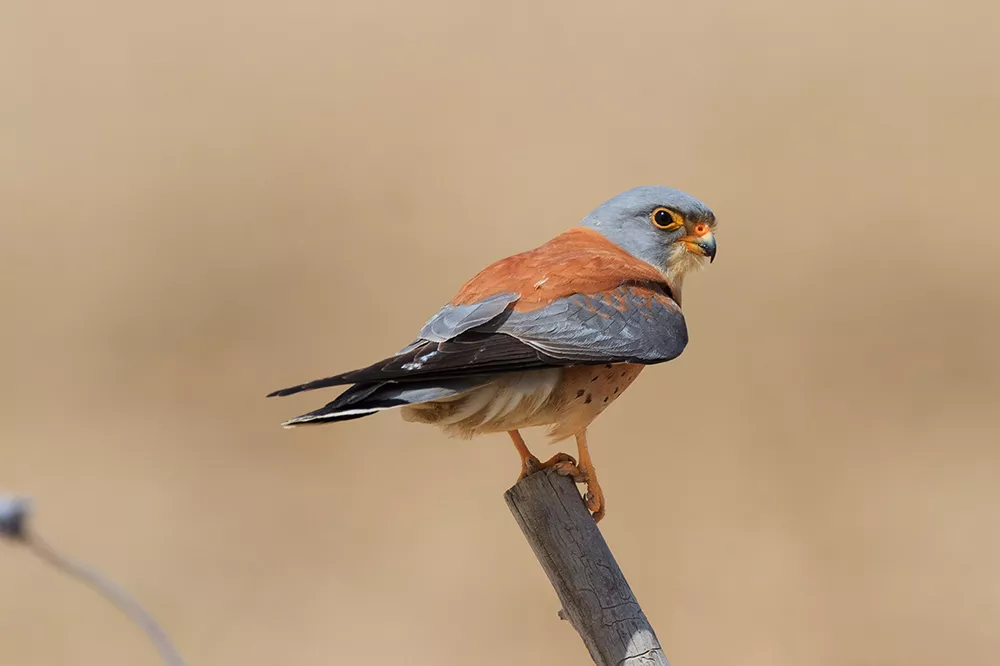The Lesser Kestrel (Falco naumanni) is a captivating small falcon species that inhabits various regions across Europe, Asia, and Africa. These birds of prey are known for their aerial agility and remarkable hunting skills. Understanding the dietary preferences of Lesser Kestrels is essential to gain insights into their ecological niche and conservation requirements. In this article, we explore the feeding habits of Lesser Kestrels, shedding light on their preferred prey species and hunting techniques.
Dietary Preferences:
Insects: Insects comprise the primary food source for Lesser Kestrels. These agile raptors are skilled at capturing a wide range of insects, including grasshoppers, beetles, butterflies, dragonflies, and locusts. They are particularly adept at catching flying insects in mid-air, displaying remarkable speed and precision.
Small Vertebrates: While insects form the bulk of their diet, Lesser Kestrels also opportunistically prey on small vertebrates. This includes lizards, mice, voles, shrews, and occasionally small birds. However, vertebrates make up a relatively smaller portion of their overall diet compared to insects.
Agricultural Surplus: Lesser Kestrels have adapted to human-altered environments, often benefiting from agricultural practices. They opportunistically feed on agricultural surplus, such as grasshoppers and other insects found in agricultural fields. This behavior contributes to their successful survival in areas where human activities have modified natural landscapes.
Hunting Techniques:
Aerial Foraging: Lesser Kestrels are expert aerial hunters, utilizing their exceptional flight skills to capture prey in mid-air. They employ a “sit-and-wait” hunting strategy, perching on elevated vantage points, such as trees, poles, or rooftops, and scanning the surrounding area for potential prey. Once a suitable target is spotted, they swiftly launch themselves into the air to seize their prey.
Low-Level Hunting: In addition to aerial hunting, Lesser Kestrels also engage in low-level hunting, flying close to the ground to catch insects or pursue small vertebrates in open grasslands or agricultural fields. Their agility and maneuverability enable them to navigate obstacles and swiftly snatch their prey from the ground or vegetation.
Migration and Diet:
During migration, lesser kestrels’ diets may vary depending on their location. For example, birds migrating through the Arabian Peninsula may rely more heavily on desert locusts, while those passing through Central Asia may feed on beetles and grasshoppers.
Conservation Implications:
Understanding the feeding habits of Lesser Kestrels is crucial for their conservation and management. As insectivorous birds, they play a valuable ecological role by helping regulate insect populations. However, several factors pose challenges to their survival:
Habitat Loss: Loss of suitable foraging habitats, such as grasslands and open agricultural areas, due to agricultural intensification, urbanization, and land-use changes, can negatively impact their prey availability.
Pesticide Use: The indiscriminate use of pesticides in agricultural practices can have detrimental effects on the insect populations that form the primary food source for Lesser Kestrels. Pesticides can accumulate in their prey, leading to reduced prey availability and potential health risks for the kestrels themselves.
Conclusion:
The Lesser Kestrel’s diet primarily consists of insects, supplemented by small vertebrates and agricultural surplus. Their exceptional aerial hunting abilities, combined with a preference for insects and opportunistic foraging behavior, contribute to their survival in diverse habitats. Conservation efforts should focus on preserving suitable foraging habitats, reducing pesticide use, and promoting sustainable agricultural practices to ensure the availability of prey resources for Lesser Kestrels. By understanding and protecting their dietary preferences, we can contribute to the conservation of this remarkable falcon species for future generations to appreciate and enjoy.
Related topics:


 Facebook
Facebook  Instagram
Instagram  Youtube
Youtube 